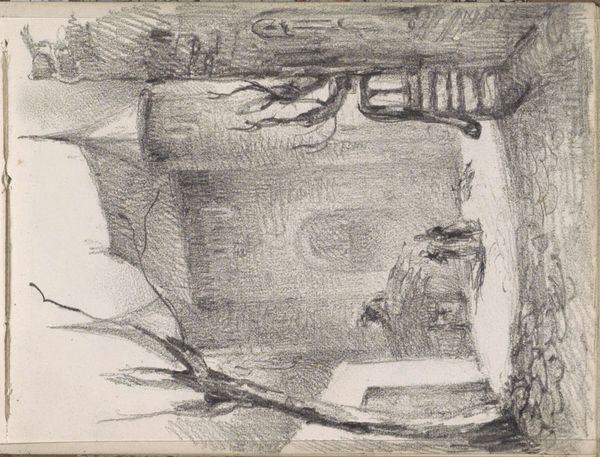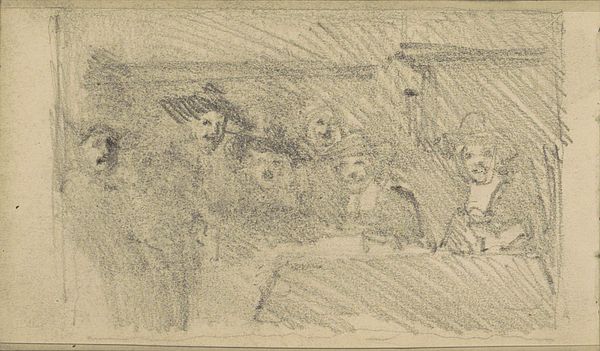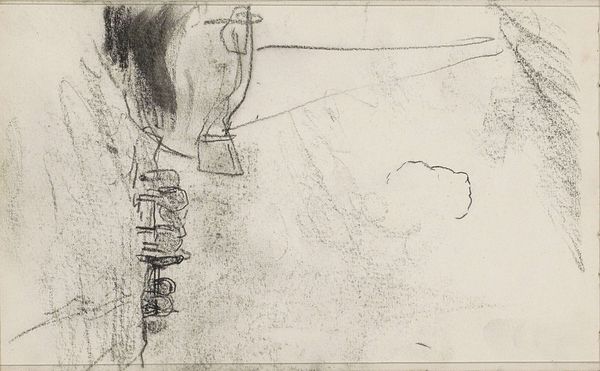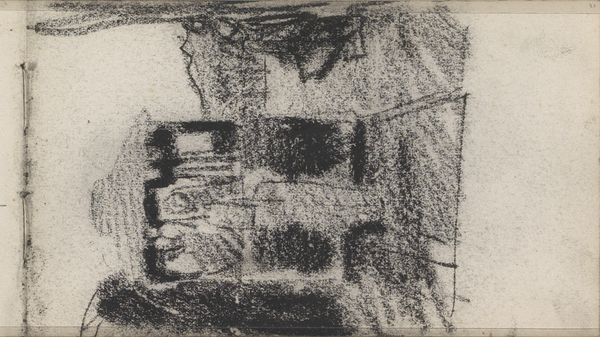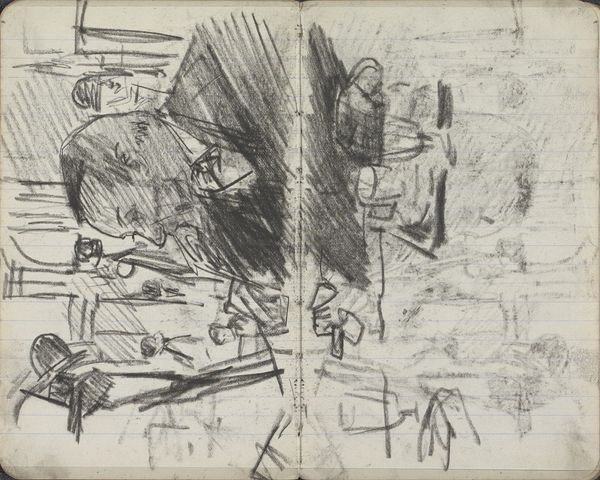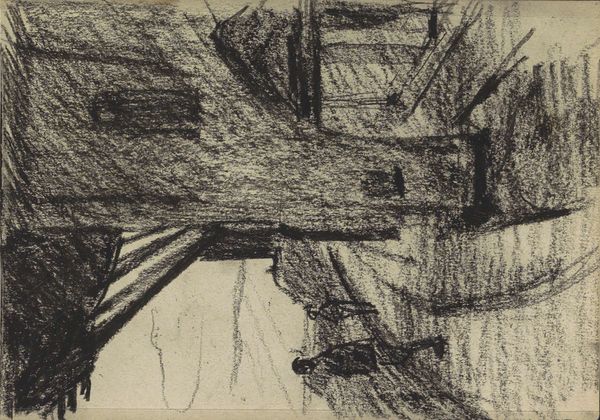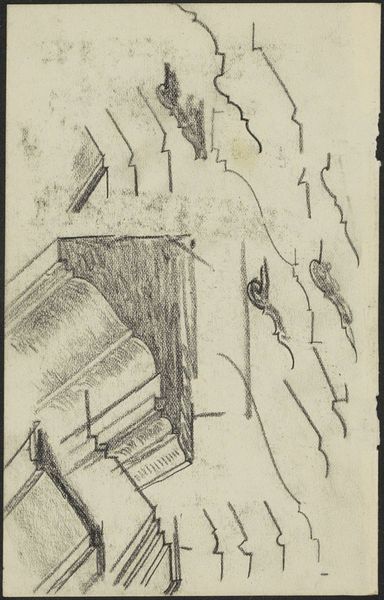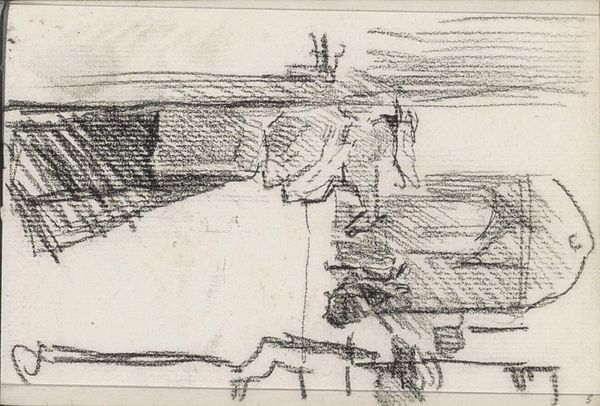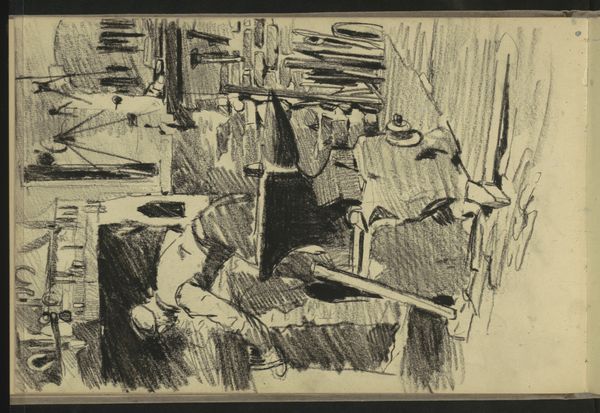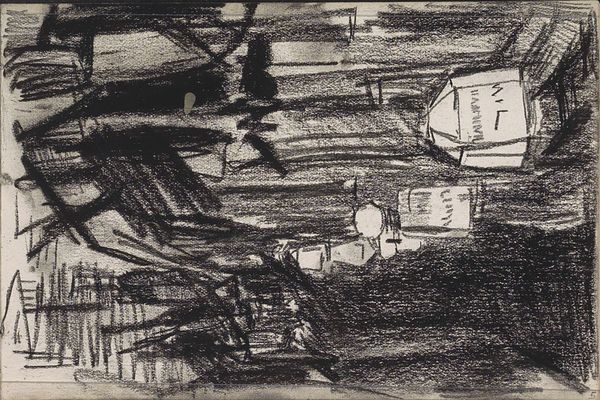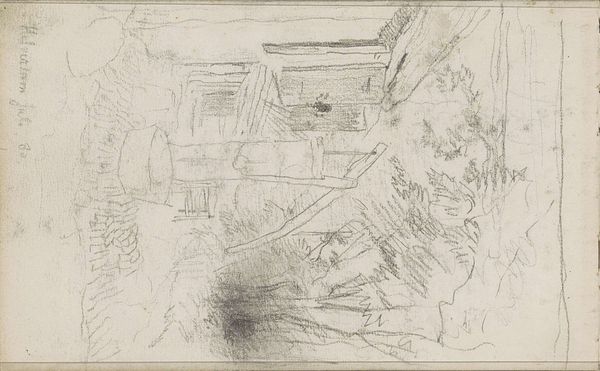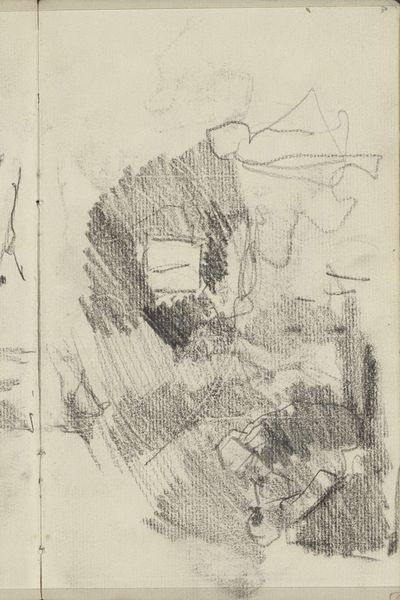
Copyright: Rijks Museum: Open Domain
Curator: Here we have Willem Witsen's "Bridge over the Rio di San Toma in Venice," created in 1914. It's a pencil drawing, currently held at the Rijksmuseum. Editor: My initial impression is of fleeting observation. It's loose, almost hesitant, yet capturing something very definite of place and atmosphere with those dense charcoal markings. Curator: Absolutely. Let's consider the materiality. Witsen's choice of pencil allows for a rapid, almost journalistic capture of the scene. The roughness of the strokes is significant. Editor: For me, the stark contrast between light and shadow immediately captures attention. See how the dark underpass of the bridge sharply bisects the composition. The marks suggest the sun, hitting the water and brick, perhaps even the wear and tear of laboring feet upon the Venetian pavements. Curator: And consider the bridge itself, not merely as an architectural structure, but as a conduit for Venetian life and labor, commerce, all those unseen movements represented in Witsen's work through these raw materials of pencil on paper. Editor: The sketch appears unfinished, deliberately raw. The structural rendering may seem slightly skewed and disproportionate, with only the play of shadow truly giving it spatial qualities. But does that imperfection almost elevate its honesty? The texture itself becomes symbolic of the grit and daily life lived within Venice at the dawn of World War One. Curator: It seems to represent how people would come to consider the structures of their existence as brittle, transient. The rapid lines imply a quick capturing of history. It does make me think about the political state of the artist's surroundings when he would have encountered this moment of time. Editor: A snapshot—materialized in lead and graphite. The immediacy in which Willem has deployed texture lends a visual, rather than tangible quality that is thought-provoking and very immediate. Curator: Precisely, and by drawing our attention to that materiality—to the literal building blocks of the image itself—Witsen invites us to consider the labor, history, and socio-economic fabric of Venice as well. Editor: It’s fascinating how such a modest pencil sketch, devoid of idealisation, manages to reveal so much about structure, place and feeling with every carefully drawn pencil mark.
Comments
No comments
Be the first to comment and join the conversation on the ultimate creative platform.


